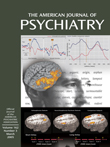Dr. Panksepp presents a diligent overview of the preclinical and clinical arms of the field. He reaches his aim of “bringing together the traditions that have helped create modern biological psychiatry.” The book not only incorporates the latest basic and clinical advances in neuropsychiatry but also identifies promising new areas of investigation. It establishes the vital connection between the principles of molecular and cellular biology with the etiology, diagnosis, treatment, and prevention of neuropsychiatric disorders and substance abuse.
Some sections provide an integrative treatment of the biochemistry of neurotransmission, behavioral pharmacology, and clinical aspects of psychiatric problems, including depression, manic-depression, and mood disorders. Other chapters address the biological mechanisms and treatment of depression, anxiety, panic, and obsessive-compulsive disorder. Organized in a coherent and easy-to-follow structure, chapters expand across different levels of analysis, from basic mechanisms to clinical practice.
The introductory sections provide a basis for the detailed coverage of the enormous amount of progress that has been achieved recently. Section 2, Imaging Human Emotions, expands on brain changes as a function of emotional states, including happiness and reward, disgust, and air hunger. Limbic-cortical interactions as part of emotional states are presented with beautiful schematic illustrations and emoticons in this chapter.
Section 6, Functional Neuroimaging in Psychiatry, includes a nice conclusion addressing future directions:
Functional neuroimaging may help predict clinical response to pharmacologic and nonpharmacologic interventions. It also can be combined with genetic studies with the aim of finding genotype-phenotype associations typical for specific disorders.
Part 2, including chapters 7 through 15, provides a comprehensive update on the etiology, biology, and treatment of mood disorders, schizophrenia, posttraumatic stress disorder, panic disorder, obsessive-compulsive disorder, childhood disorders, and dementia. Each section also includes critical analyses of current research methods and key integrative concepts.
Chapters worth special attention include chapter 8, “Core Psychiatric Challenges,” which addresses treatment of mood disorders. New treatments such as vagus nerve stimulation and transcranial magnetic stimulation, along with atypical antipsychotics and new antiepileptics used for treatment of mood disorders, are covered nicely in this chapter. Chapter 17 complements chapter 8, providing more detail regarding research and clinical aspects of vagus nerve stimulation and transcranial magnetic stimulation and adding another somatic treatment, deep brain stimulation, to the discussion.
This book is a must for the library of every medical school, basic medical science facility, and psychiatric hospital as well as for all those who are in the basic and clinical fields close to psychiatry. It will be useful for students, teachers, and practitioners, as well as the scientists who harvest the basic knowledge from which future understanding must emerge.
Another plus to obtaining this book is that it comes in an e-book version. A must for everybody who purchases the book!

